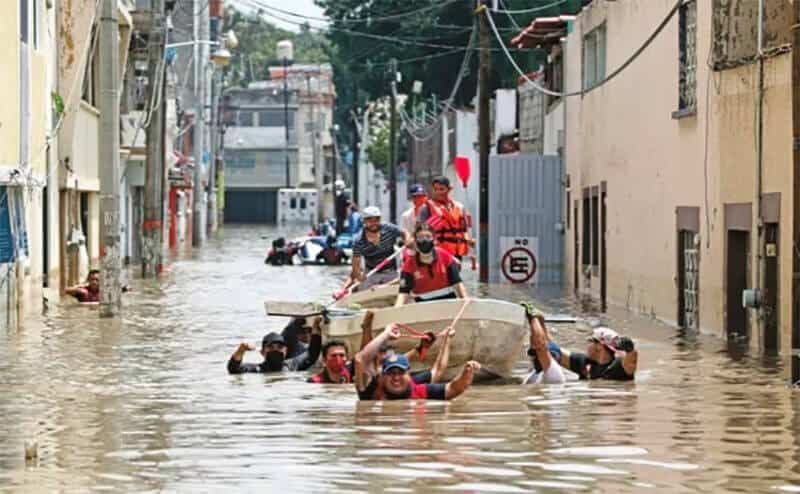Recent flooding in Tula, Hidalgo, was caused by a fatal flaw in an infrastructure project built to drain rainwater and wastewater from Mexico City, according to a civil engineer who specializes in hydraulics.
Fifteen people died earlier this month after the city was inundated with water that overflowed from the Tula River after heavy rain in the Mexico City metropolitan area, especially the México state municipality of Ecatepec.
Fourteen of the victims were patients in an IMSS hospital in Tula, located about 100 kilometers north of downtown Mexico City.
According to Carlos Paillés, a civil engineer and head of the Hidalgo Valleys Environmental Infrastructure Trust, a flaw in the design of the Eastern Emission Tunnel (TEO) project, which was completed in 2019, is the main reason why Tula suffered severe flooding this month.
Paillés described the 30-billion-peso, 62-kilometer-long mega tunnel – built to reduce the risk of flooding in Mexico City – as an “extraordinary hydraulic engineering project” but one that is incomplete because it doesn’t include a canal that would allow runoff to flow into the Tula River at more than one point.

That oversight caused this month’s tragedy in Tula, the engineer told the newspaper El Universal, adding that all three levels of government are to blame. He questioned why a new canal wasn’t built to complement the TEO, as occurred in 1975 when the Salto Tlamaco canal was built in Hidalgo as part of the Central Emission Tunnel project, which also drains wastewater from Mexico City.
“Why didn’t the Mexico City government do something similar with the TEO? Because of the irresponsibility of several individuals, particularly two civil engineers with specific positions in the project, whose names and responsibilities I will personally deliver to the governor [of Hidalgo],” Paillés said.
A group of 30 experts from the National Autonomous University, the Metropolitan Autonomous University and the Chapingo Autonomous University also concluded that the failure to construct a complementary canal was the main cause of flooding in Tula. As a result of its absence, the TEO discharges 150 cubic meters of water per second into the Tula River at a single point – when it is functioning the way it was designed to work.
But after heavy rain fell in the Mexico City area on September 6, an estimated 500 cubic meters per second gushed out of the TEO and into the Tula River, Paillés said.
He apportioned blame for the situation to “those who didn’t take any precautions,” including negligent governments, because they failed to heed warnings about the possibility of the TEO causing flooding in Hidalgo.
“Everyone was delighted that this project would save the country’s capital from a possible flood, but they forgot about Hidalgo,” reported El Universal.
“There were a lot of warnings: environmental organizations warned that if the TEO entered into operation, Tula would be sacrificed. The warning became a prophecy and the prophecy became a reality.”
One way to reduce the risk of more severe floods in Hidalgo, according to the university experts, is to build small treatment plants in Mexico City that would treat the wastewater of individual “zero discharge” buildings. Water would be reused in the capital and wouldn’t flow into the TEO, reducing its burden. Construction of the plants wouldn’t be overly expensive, the experts said.
As things currently stand, large quantities of untreated wastewater, including water used in industry that is contaminated by heavy meals, flow into the Tula River via the TEO, causing significant contamination.
Paillés likened the situation to going to the toilet outside. “Directing untreated wastewater from cities to rivers and lake is the cowardly professional version of defecating in the open air,” he said.
“Tula must stop being the drain of millions of people who have turned the river into a black river,” said René Romero, a member of an environmental organization that warned that discharges from the TEO could cause flooding in Hidalgo.
“Mexico City sees us as a sewer, as if the function of the river should be a mega drain ready to receive its dirty water. There are alternatives,” he said, “so that Tula stops being contaminated.”
With reports from El Universal
